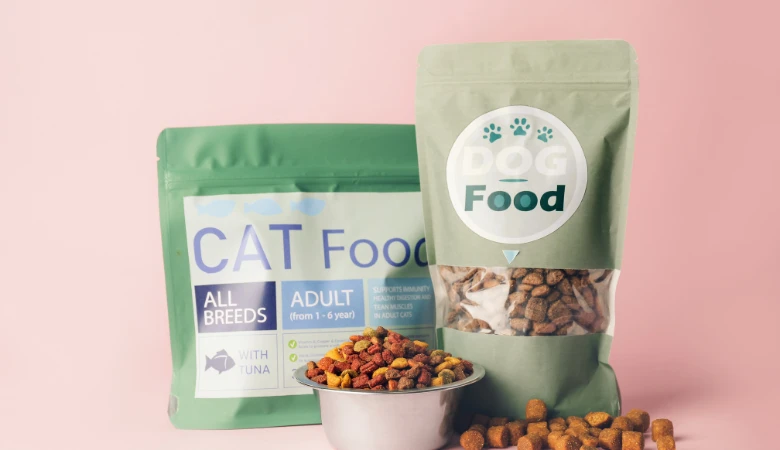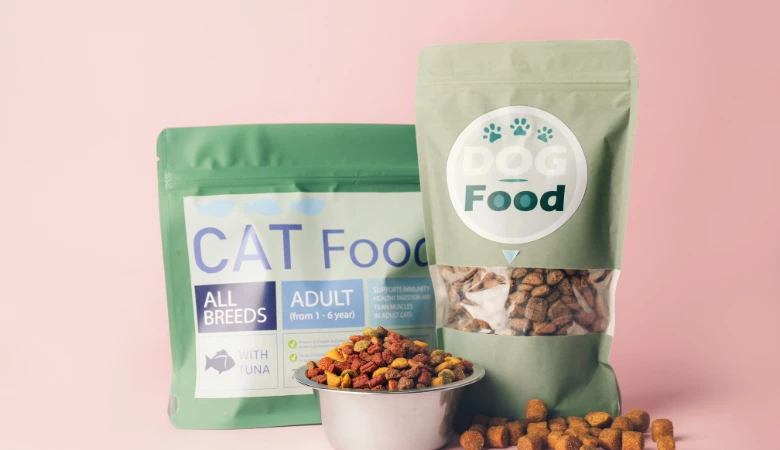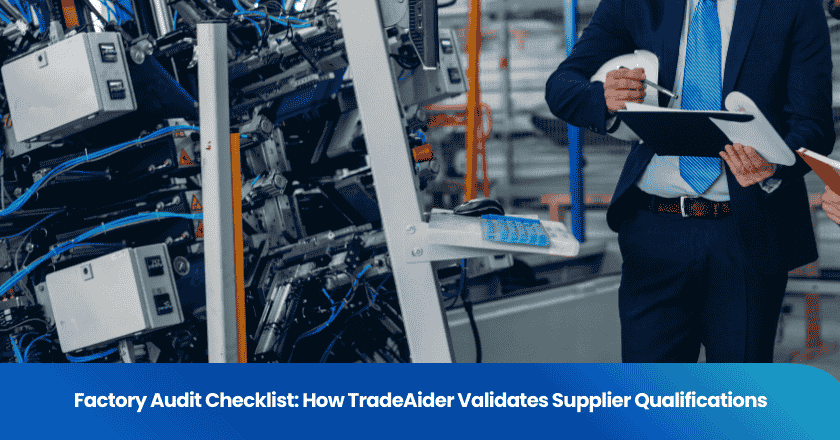
Quality inspection in pet food in 2025 uses strict rules and new technology. Companies make pet food safety the most important thing. They use new tools and follow new rules to keep animals safe. These steps also help people trust the food. Safety checks begin with raw materials and go through every step. These actions stop risks and keep food safe. People trust companies that show they care about pet food safety and have a strong quality inspection in pet food system.

Key Takeaways
• Begin quality inspection by picking and testing raw ingredients. This helps keep pet food safe and healthy.
• Check suppliers often by looking at their safety records. Visit their sites to stop contamination.
• Keep everything very clean and control cooking steps. This kills germs and keeps pet food safe.
• Test often and use preventive steps, like asking veterinarians for advice. This helps find risks early and keeps pets safe.
• Use digital traceability and follow new safety rules. This makes it easy to track products and fix problems fast.
Quality Inspection in Pet Food
Ingredient Sourcing
Ingredient sourcing is the first step in quality inspection in pet food. Companies pick only the best raw materials for safety and nutrition. They check each batch for things like pesticides or heavy metals. Ingredient sourcing teams talk with farms and suppliers to know where ingredients come from. They use strict rules to decide if materials are good or bad.
Tip: Always ask suppliers for ingredient reports. These reports help find risks before ingredients are used.
A strong ingredient sourcing process helps the whole quality inspection in pet food system. It lowers the chance of unsafe materials getting to pets. Teams use controls to watch every shipment. They also keep records to check ingredient quality over time.
Supplier Verification
Supplier verification is an important part of quality inspection in pet food. Companies must know their suppliers and check their safety steps. They visit supplier sites and look at their safety records. This helps stop contamination from getting into the supply chain.
The Food Safety Modernization Act (FSMA) needs hazard analysis and controls. Teams must find hazards like bacteria or chemicals and set up ways to stop them. They use checklists and audits to make sure suppliers follow safety rules.
• Steps for supplier verification:
a. Check supplier certifications and safety records.
b. Visit supplier sites to see safety steps.
c. Test ingredient samples for bad things.
d. Keep talking with suppliers often.
Supplier verification and ingredient sourcing work together to make a strong quality inspection in pet food process. By using controls and hazard analysis, companies keep pets safe and earn trust from people.
Manufacturing Controls
Hygiene Practices
Hygiene is very important in pet food factories. Workers must wash their hands before work. They wear clean clothes and hairnets to stop germs. Teams clean tools and tables many times a day. Managers look for dust, spills, or bugs. They use checklists to make sure cleaning is done. These steps help keep everyone safe.
Note: Good hygiene stops bacteria and other dangers. It also helps the company reach its safety goals.
Cooking and Heating
Cooking and heating are big parts of making pet food. Workers use machines to cook food at the right heat. This kills bad germs and keeps food safe. Teams watch the heat and time for each batch. They write down this information to prove food is safe. Cooking and heating also change how pet food feels and tastes.
A simple table shows the main cooking controls:
| Step | Purpose | Control Method |
|---|---|---|
| Pre-heating | Remove surface germs | Temperature checks |
| Cooking | Kill bacteria | Time and heat logs |
| Cooling | Prevent spoilage | Rapid cooling |
Staff Training
Staff training is needed for good quality control. Workers learn about hygiene and how to use tools. They also learn what to do in emergencies. Trainers teach new workers about the process. They give updates to all staff often. Training shows how to find problems and report them fast. Trained teams help keep the process safe.
Tip: Training helps workers see new risks and follow every rule.
Pet Food Safety
Hazard Analysis
Hazard analysis is very important for pet food safety. Teams look for dangers like bacteria, chemicals, or things that do not belong. They check every step in making pet food. This helps them find risks that could hurt pets. Hazard analysis helps stop foodborne illnesses. Safety teams use checklists to watch for hazards. They look at old safety checks to find weak spots. Good hazard analysis helps keep food safe. It keeps pet food safety very high.
Note: Hazard analysis helps stop foodborne illnesses before pets get sick.
Preventive Approaches
Preventive approaches are the main part of pet food safety. Workers set up safety steps to stop problems early. They use things like filters and screens to block bad items. Teams test samples often to make sure food is safe. They change safety steps when new risks show up. Preventive steps make safety a daily job. These actions keep pets safe and help pet food safety. Safety steps also help companies pass safety checks.
A simple list of preventive approaches:
• Regular cleaning of equipment
• Frequent testing of ingredients
• Quick removal of unsafe products
• Staff training on safety
Veterinarian Involvement
Veterinarian involvement makes pet food safety better. Veterinarians give advice about nutrition and safety. They help plan food that fits pet needs. They also look at safety data and suggest changes. Their knowledge helps find health risks early. Veterinarians teach staff about foodborne illnesses and safety. They work with teams to make food safety better. Their help makes pet food safety stronger and more trusted.
Tip: Veterinarians help keep safety important at every step.
Testing Methods
Nutritional Testing
Nutritional testing is very important for pet food safety. Teams check if food has the right protein, fat, vitamins, and minerals. Many companies use third-party testing to double-check results. This helps make sure the food is good for pets. Aafco-compliant nutritional testing sets the standard for balanced diets. Third-party testing also helps companies follow the law. Shelf life and stability testing checks if nutrients last over time. This stops nutrients from being lost before pets eat the food.
Tip: Third-party testing makes nutritional testing results more trustworthy.
Aafco-compliant nutritional testing and shelf life and stability testing work together. They help keep pet food safe and healthy.
Microbiological Testing
Microbiological testing looks for bacteria, yeast, and mold in pet food. Third-party labs use special tools to find bad germs. Teams test samples from each batch to catch problems early. Shelf life and stability testing also checks for spoilage from microbes. Third-party testing helps companies show their food is safe for pets. Regular microbiological testing lowers the chance of recalls and keeps animals healthy.
• Key steps in microbiological testing:
◦ Take samples from each batch
◦ Use third-party testing for better results
◦ Check shelf life and stability testing data
Contaminant Screening
Contaminant screening finds unwanted things in pet food. Teams use third-party testing to look for heavy metals, pesticides, and other dangers. Contaminant testing services use advanced tools to test for these risks. Third-party testing makes sure results are fair and correct. Shelf life and stability testing also checks if contaminants build up over time. This keeps pet food safe and helps pet owners trust the food.
Note: Third-party testing and contaminant screening keep pets safe from hidden dangers.
Packaging and Traceability
Packaging Checks
Packaging checks are very important for pet food safety. Teams look at every package for damage or leaks. They check for broken seals on bags and cans. Workers use checklists to make sure packages are safe. They watch for signs of tampering or pests. Teams test packaging to see if it keeps food fresh. Good packaging checks stop contamination and keep pets safe.
Tip: Strong packaging helps stop spoilage and makes traceability easier.
Labeling Updates
Labeling updates help people know what is in pet food. Teams check labels to make sure they are right and easy to read. Labels must show ingredients, nutrition facts, and expiration dates. They also have batch numbers for traceability. Clear labels help pet owners pick safe food. Updated labels make it easy to track food if there is a recall.
A simple table for label checks:
| Label Element | Purpose |
|---|---|
| Ingredients | Show what is inside |
| Nutrition Facts | List key nutrients |
| Batch Number | Support traceability |
| Expiry Date | Show freshness |
Digital Traceability
Digital traceability is common in 2025. Companies use barcodes and QR codes to track products. This helps teams find problems fast. Digital records help with recalls by showing where food went. Traceability systems store data about packaging and shipping. These records help with traceability and recall plans. Digital traceability builds trust and keeps the supply chain safe.
Note: Digital traceability helps with recalls and keeps food safe.
Food Safety Regulations
2025 Regulatory Updates
In 2025, food safety rules for pet food are tougher. Agencies want companies to follow new safety steps at every stage. These new rules focus on ingredient testing, controls in factories, and packaging. Inspectors visit factories more often to check for safety. They look for records that show teams follow the rules. New rules also say every batch needs digital tracking. This helps teams act fast if there is a recall. Companies must keep up with rule changes to avoid getting in trouble.
Note: Knowing the latest safety rules helps companies keep pets safe and earn trust from pet owners.
Compliance Documentation
Clear and correct records are needed for following the rules. Teams must save reports about ingredients, tests, and cleaning. Inspectors look at these records to see if rules are followed. Companies use digital tools to store and sort safety records. These tools help teams find records quickly during checks. Good records prove teams follow safety rules every day.
A simple checklist for compliance documentation:
• Ingredient reports
• Batch testing results
• Cleaning logs
• Staff training records
Safety Regulations
Safety rules tell teams how to make safe pet food. These rules cover raw materials and finished food. Teams must follow rules for hygiene, cooking, and packaging. Safety rules also say workers need regular training. Inspectors check if workers know and follow the rules. Companies must change their steps when rules change. Following safety rules helps stop problems and keeps pets healthy.
| Area | Safety Regulations Example |
|---|---|
| Ingredient Sourcing | Test for contaminants |
| Manufacturing | Follow hygiene and cooking rules |
| Packaging | Use tamper-proof seals |
Tip: Following safety rules at every step helps build a strong safety culture.
Technology and Trends
Automation
Automation is changing how pet food quality inspection works in 2025. Companies use machines for jobs that repeat a lot. Robots look at packaging and check the weight of ingredients. They also watch cooking times to make sure food is safe. Automated systems help stop mistakes and make work faster. Sensors watch temperature and humidity all the time. These tools help teams find problems early. Machines clean equipment so germs do not spread. Workers can do more important jobs while machines do simple checks.
Tip: Automation lets teams finish work faster and keeps pet food safe.
Data Analytics
Data analytics helps teams see every part of making pet food. Computers gather data from ingredient sourcing to packaging. Teams use this data to find patterns and spot risks early. Dashboards show test results, batch records, and safety checks together. This helps teams notice problems right away. Predictive analytics helps teams get ready for future risks. They can change recipes or steps by looking at the data.
A simple table shows how data analytics helps with safety:
| Data Source | What It Tracks | Benefit |
|---|---|---|
| Ingredient Logs | Supplier quality | Stops bad batches |
| Sensor Data | Temperature, humidity | Prevents spoilage |
| Test Results | Nutrient levels | Ensures balanced food |
Industry Events
Industry events help people learn about new trends and rules. Conferences and workshops share new research and technology. Experts teach about new testing and safety laws. Teams learn good ideas from others in the industry. These events help companies keep up with changes in pet food safety. Meeting others at events builds strong industry connections.
Note: Going to industry events helps teams learn and make their quality inspection better.
Pet food safety needs good ingredient checks, supplier checks, and clean work areas. Teams use new technology and follow the latest safety rules. They look at safety steps often and teach workers what to do. Changing with new ideas keeps pet food safe. A simple checklist helps teams remember what to do:
• Look at every ingredient
• Test for things that could be unsafe
• Write down all records
• Change safety plans when needed
Pet food safety and being open help keep pets safe and make people trust the food.
FAQ
What is the most important step in pet food quality inspection?
Ingredient sourcing is the key first step. Teams look at each batch for safety and nutrition. They follow strict rules to keep bad things out of pet food.
How often should companies test pet food for contaminants?
Companies need to test every batch before it ships. Regular testing finds problems early. This keeps pets safe and helps owners trust the food.
Why does digital traceability matter in 2025?
Digital traceability lets teams follow each product from start to end. Fast tracking helps with recalls and shows where ingredients came from. This makes everything safer and clearer.
Who checks if pet food companies follow safety rules?
Government inspectors go to factories and check records. They look for proof that teams do every safety step. Companies must have clear records for each process.
How can pet owners know if pet food is safe?
Pet owners can read labels for ingredient lists, nutrition facts, and batch numbers. They can scan QR codes for more details. Clear labels help owners pick safe food.
Grow your business with TradeAider Service
Click the button below to directly enter the TradeAider Service System. The simple steps from booking and payment to receiving reports are easy to operate.

.png)

